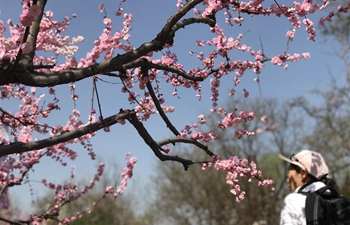LOS ANGELES, March 27 (Xinhua) -- Researchers at the University of Utah Health found pairing music with one of four pain medications offered a promising complementary strategy to treat pain, according to a study published on Wednesday in the journal Frontiers in Neurology.
The study found that the ibuprofen-music pair improved analgesic outcomes in an inflammation pain mouse model by more than 90 percent, while the cannabidiol-music and galanin analog NAX 5055-music pairings significantly reduced inflammation by 70 percent.
"We know these drugs work without music but they can produce toxicity and adverse effects," said Grzegorz Bulaj, associate professor in Medicinal Chemistry at University of Utah Health, and senior author on the paper.
"The holy grail is to combine the right drug with this new paradigm of music exposure, so we do not need as much drug for analgesic effects," he said.
The researchers evaluated this new strategy using two pain models -- one model mimics inflammatory pain (carrageenan model) and one mimics surgical pain (plantar incision).
Mice in the study were separated into two groups. The control group was exposed to ambient noise while the music-intervention group listened to three three-hour segments of Mozart for 21 days.
The study was conducted four times to explore pairing music with ibuprofen (25 mg/kg), cannabidiol (100 mg/kg), levetiracetam (400 mg/kg) and the galanin analog NAX 5055 (4 mg/kg). Both the control and music groups received one suboptimal dose of each drug to evaluate the analgesic effect of music in the pain models.
When paired with music, ibuprofen reduced pain responses in the inflammation pain model by 93 percent, as compared to the drug alone.
In addition, music and cannabidiol or NAX 5055 reduced swelling by 21 and 9 percent, respectively in the inflammatory pain model, according to the study. Music alone also reduced pain by 77 percent in the surgical pain model.
"If we could package music and other non-pharmacological therapies into mobile apps and deliver them with drugs and it works, it will be better than drugs alone," Bulaj said. "It is exciting to find new ways to improve pain treatments."













